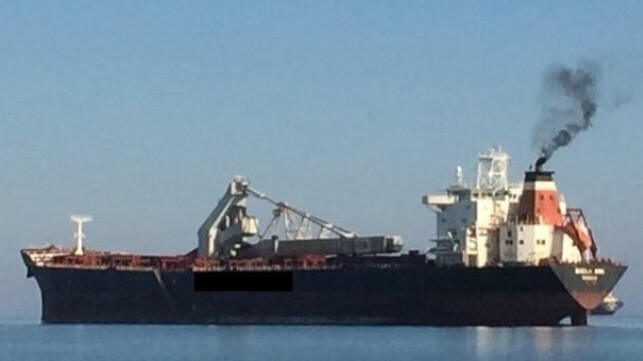EU Agrees on Including Shipping in ETS, Expanding Scope of Regulations

Incorporating shipping into the European Union’s Emissions Trading System took a large step forward on Tuesday night as a preliminary agreement was reached on the key elements of the regulations for the maritime industry. The European Parliament, Council, and Commission reached an agreement on the terms, with the lead negotiators saying the framework is a “substantial improvement,” as it widens the scope of the regulations and lays the groundwork for the final agreements. The shipping industry overall is responding positively while the legislators and environmentalists hailed the agreement.
“Bye, bye bunker fuels. Ships must use greener fuels - that’s good for climate and for air quality especially for cities close to rivers and coast. Not only trips inside the EU but all international trips from and to EU ports are covered,” Tweeted Peter Liese, the lead negotiator and champion for the policy.
Among the changes agreed to is the inclusion of both methane and NOx emissions which Liese said is important because “alternatives to bunker fuels also create problems for the climate if not managed properly.” They also agreed to increase the scope of the regulations to include offshore vessels bigger than 5,000 gross tons with the regulators noting that they would monitor the industry to ensure there wasn’t a sudden surge in 4,999 gross ton vessels. By increasing the scope Liese said they would capture 20 million more tons of CO2 as well as raise additional revenues for R&D to advance decarbonization.
“These are big achievements by the Parliament which are crucial for the environmental integrity of the whole scheme,” said Liese while noting there were final elements still to be resolved at their meetings in December. “There are still very difficult points to be solved in the ETS negotiations, including free allowances for the industry, the innovation fund, the modernization fund, and the inclusion of heating and road transport in the scheme.”
The framework agreed to last night calls for phased-in regulations over three years starting in 2024. Shipping would be accessed 40 percent of the costs in 2024, 70 percent in 2025, and 100 percent starting in 2026. The regulations would be applied to 100 percent of the emissions while on voyages within the EU and 50 percent of the emissions on voyages between EU ports and the rest of the world.
They believe the agreement would lead to as much as 120 million tons of carbon savings annually from the maritime industry. It was pointed out it would be twice as much as the EU plans to achieve from the ban on gasoline-powered vehicles.
“The EU’s deal marks a watershed moment for shipping decarbonization,” the environmental NGO Transport & Environment announced shortly after news of the preliminary agreement. Jacob Armstrong, sustainable shipping officer at T&E released a statement saying “No longer will shipping be let off the hook for its massive climate impact. No longer will international emissions be ignored by national policymakers. With this ambitious ETS covering all greenhouse gases, offshore vessels and ensuring funding for green shipping, the EU has thrown the gauntlet down to other jurisdictions like the US, China, and Japan to make this hugely important first step towards zero-emission shipping.”
Shipping associations also welcomed the resolution pointing out that the uncertainty made it difficult for the industry to move forward. The World Shipping Council for example issued a statement saying, “We are ready, and we hope that the EU ETS for maritime will help drive investment in renewable energy as well as in the supply networks needed for the alternative maritime fuels necessary to make the transition.”
“Including all GHGs – CO2, methane and nitrous oxide - in the EU ETS is an important step. But only when the EU ETS takes a full life cycle perspective will it reach its real potential, increasing the competitiveness of truly renewable fuels,” said Jim Corbett, the World Shipping Council’s (WSC) Environmental Director for Europe.
EU members called the agreement a critical step in laying the groundwork to complete the ETS not only for shipping but as a comprehensive approach to carbon emissions. T&E quickly responded pivoting to calls to use the agreements for the maritime sector as the basis to also include aviation. The three EU regulatory bodies are due to convene on December 16 and 17 at which time the goal is to finalize and adopt the regulations.
